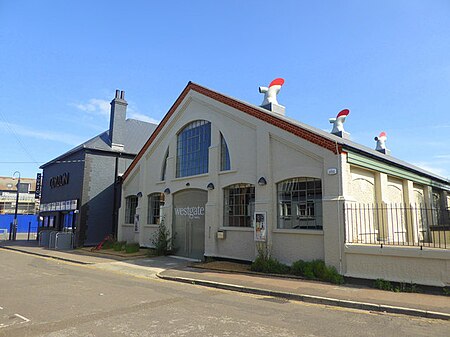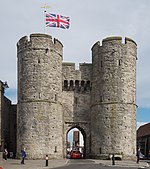Westgate Hall, Canterbury
Buildings and structures in CanterburyCommunity centres in EnglandDance venues in EnglandDrill halls in EnglandEntertainment venues in England ... and 1 more
Use British English from October 2014

Westgate Hall is a hundred-year-old drill hall and community space in a Conservation area of Canterbury, Kent, notable for hosting community events. The Hall was threatened with closure or demolition in 2009, but a group of local people fought to save it and created the venue it is today. The building is now leased by Curzon Cinemas. Westgate Hall now hosts a range of events from parties to conferences, markets and fairs including the Westgate Hall Market.
Excerpt from the Wikipedia article Westgate Hall, Canterbury (License: CC BY-SA 3.0, Authors, Images).Westgate Hall, Canterbury
Donsway Drive, Canterbury The King's Mile
Geographical coordinates (GPS) Address Nearby Places Show on map
Geographical coordinates (GPS)
| Latitude | Longitude |
|---|---|
| N 51.281666666667 ° | E 1.0775 ° |
Address
Pound Lane
Donsway Drive
CT1 2BZ Canterbury, The King's Mile
England, United Kingdom
Open on Google Maps










